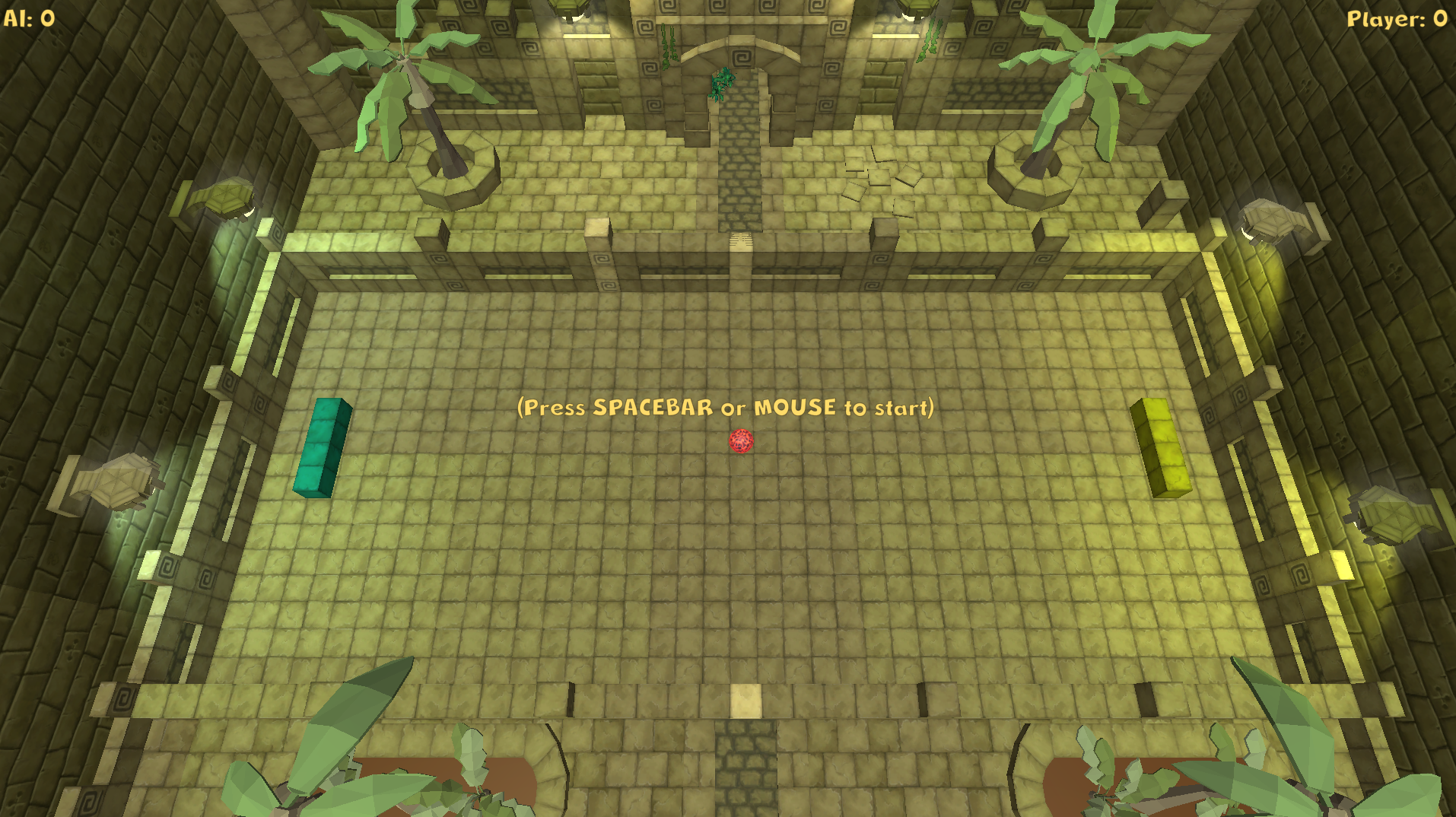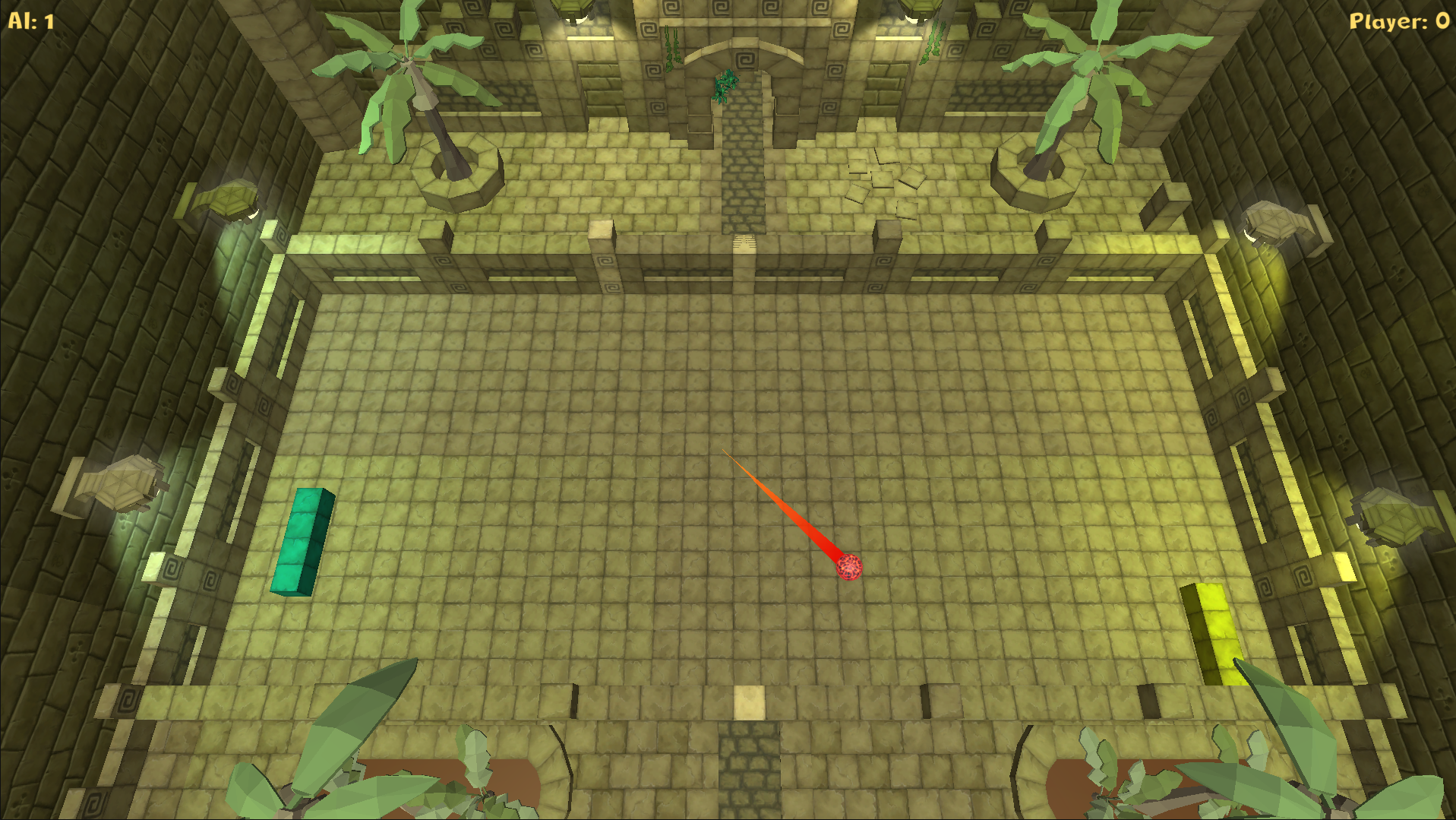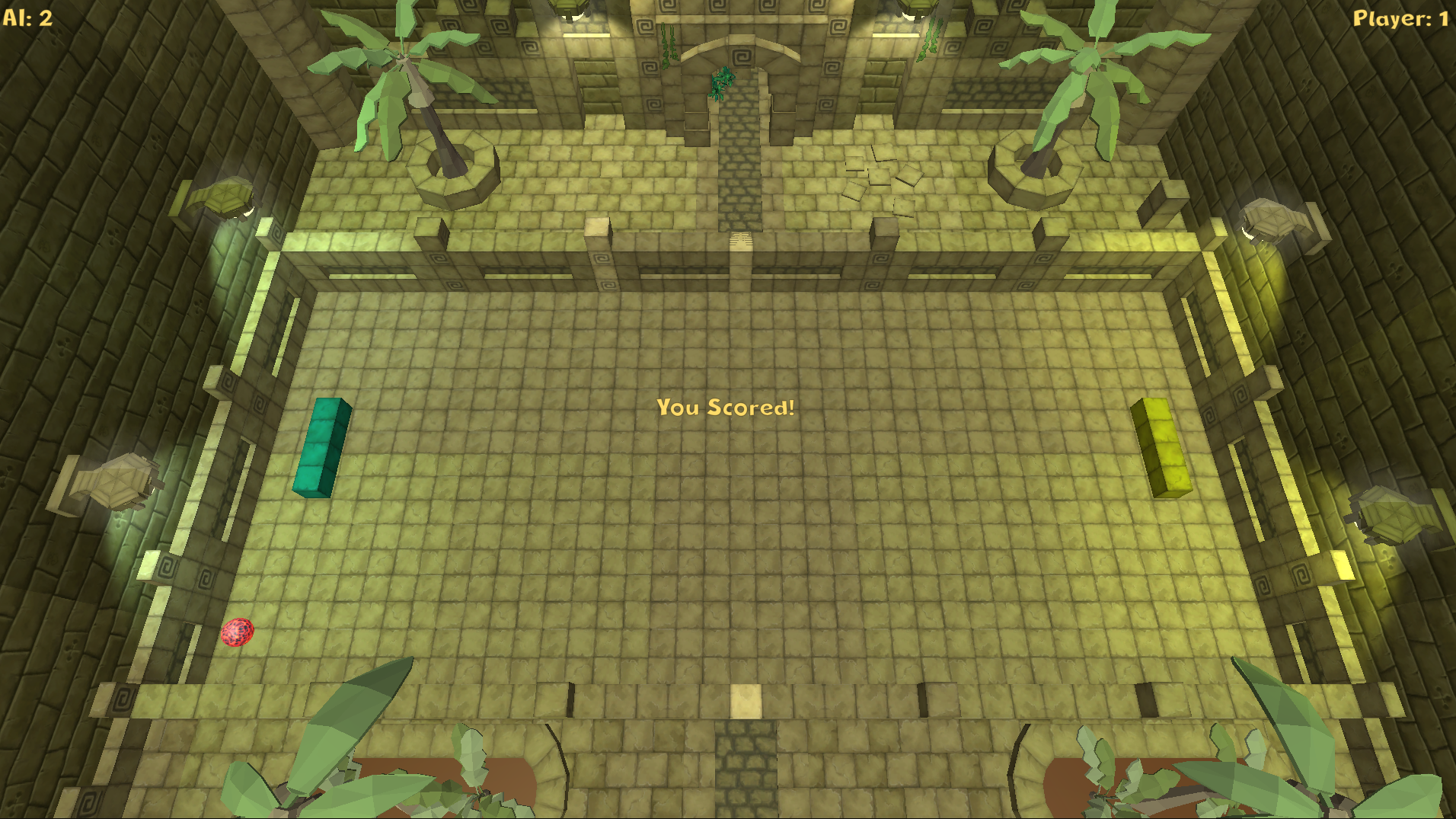3D Pong
3D Pong is a barebones tribute to the original, dressed up in a jungle-temple aesthetic. The goal was simple: rebuild Pong, give it spatial depth, and use it as a sandbox to explore the fundamentals movement constraints, ball physics, and a lightweight AI that tracks, predicts, and reacts.

Behind the Project
This was one of the first experiments and it’s very small in scope but heavy on fundamentals.
Technically, it focused on two pillars:
- Axis-bounded paddle control: a clean system to move a paddle within a predefined range along a single axis, with snappy clamping and no jitter at the edges.
- Ball-tracking AI: an opponent that reads ball velocity and direction to predict its landing point and reposition in time to intercept.
As the rally continues, the ball speed ramps up, pushing the tracking system and reaction timing harder, and turning simple exchanges into twitchy survival.

Along the way, it also served as a testbed for:
- Layering a 3D look onto a flat design without complicating the rules
- Reusing old temple assets to build a fun, readable scene
- Keeping physics deterministic enough to feel fair at higher speeds
What to Expect
This is pure arcade, easy to grasp, quick to play and intentionally minimal.
- Classic Pong rules, 3D presentation
- Keyboard controls (up and down arrows) for the player paddle
- An AI opponent that tracks and predicts ball impact
- Speed escalation over time to raise the stakes

A Few Known Limitations
- One arena, no progression or unlocks
- Minimal UI, no save/persistence
- AI tuned for learnability, not high-end challenge
- Prototype polish; collisions and edge cases can feel a bit spicy at top speed
Why It Exists
3D Pong is here because foundations matter. It’s a small, sturdy place to practice core ideas and movement constraints, predictive AI, acceleration curves before building bigger systems. It probably won’t see major updates, but it earns its spot as one of the foundation projects that helped shape the later work.
